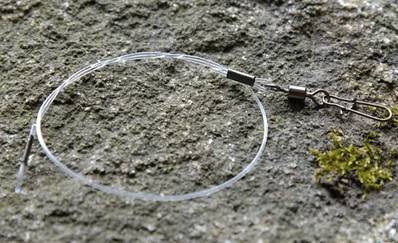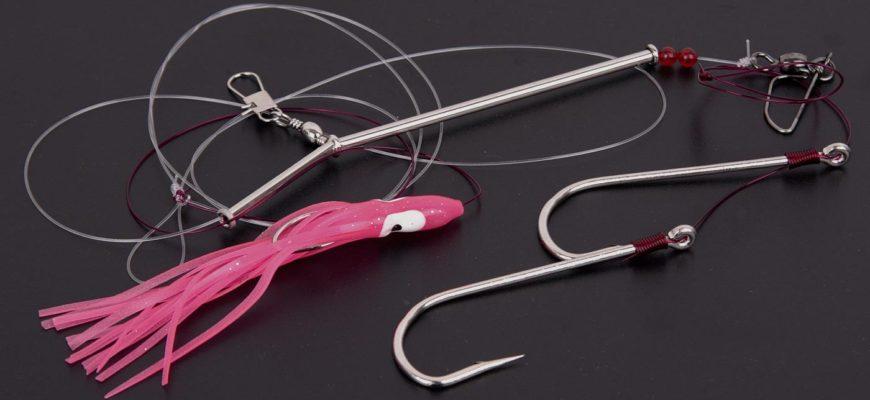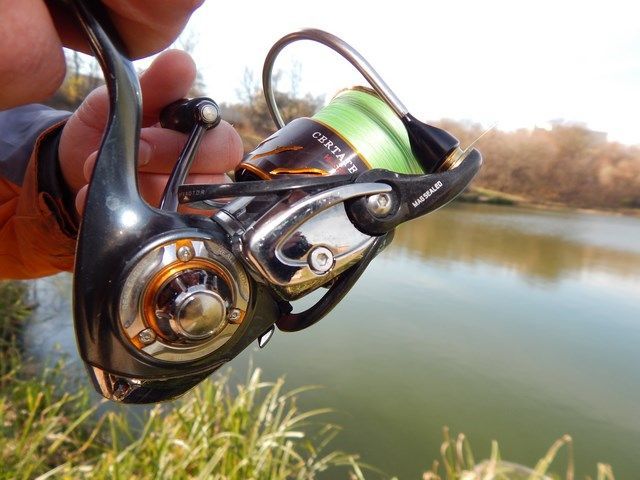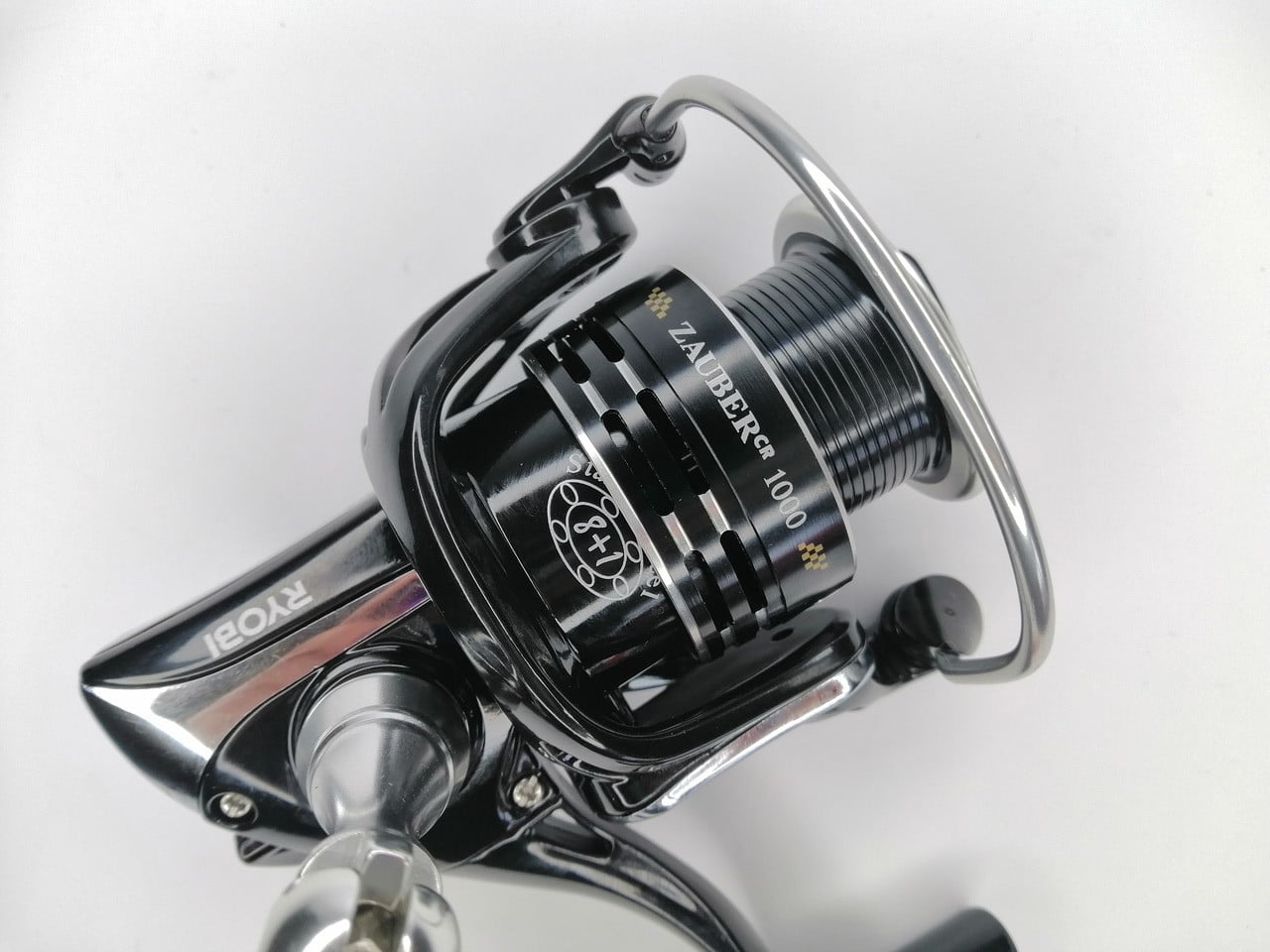The amount of the catch is determined by the tackle available to the fisherman and the ability to use them. Leashes are one of the most important pieces of fishing equipment, and they are used by novice and experienced fishermen alike. The choice of suitable leashes should correspond to the type of fish you plan to catch, tackle, fishing conditions.
- What are fishing leashes, what types of fishing are they used in?
- Types of fishing leashes and leash materials
- Mono and braided line when fishing for peaceful fish
- Fluorocarbon line
- Steel wire, aka “steel”
- Kevlar leashes
- A tungsten leader is a good option for pike
- Titanium leashes
- What types of fishing leashes are there
- Leashes for peaceful fish
- Leashes for predatory fish
- Leashes for various types of fishing
- How to do it yourself
- Поделиться ссылкой:
What are fishing leashes, what types of fishing are they used in?
A leash is a small piece of line,
fluor, or leash material that attaches to the end of the body. Hooks ,
spinners and other lures and rigs are already mounted on the leash
. For long casts, the leash is not attached to the main line, but to the
shock leader . Sometimes a special elastic insert is used to connect the rig in the main tackle –
feedergam… When the fisherman prepares to fish, he can prepare in advance the required number of leashes with already prepared rigs. This is especially important in cases where the angler wants to try several fishing options in a single trip to the pond. Sometimes the hook may become blunt. In this case, it will help if several leashes with sharp hooks are stocked up. This element of the tackle must be prepared taking into account the characteristics of the fish that are going to be caught.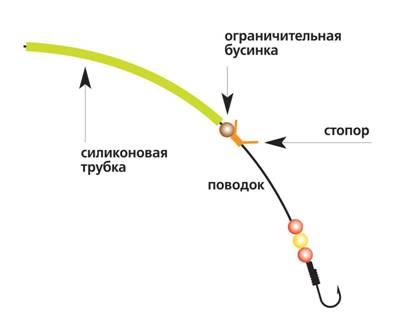
that this circumstance is very important when fishing for crucian carpor
bream . When fishing, the hook often clings to something underwater. For example, he can stick into a snag. In this case, you will have to lose the leash, but the basic rig will remain intact. When fishing for predators, the leash is used for other purposes – a situation is possible, especially when fishing for pike and pike perch, when they are able to easily gnaw through the line. In such cases, you can, for example, use a steel or tungsten leader to eliminate this possibility.
Types of fishing leashes and leash materials
For the manufacture of leashes, various leash materials can be used, each of which has its own characteristics that determine their use. The choice of the appropriate option depends on the characteristics of the fish being caught.
Mono and braided line when fishing for peaceful fish
These materials are used in most cases. Usually, a line that is thinner than the main one is used for the leash.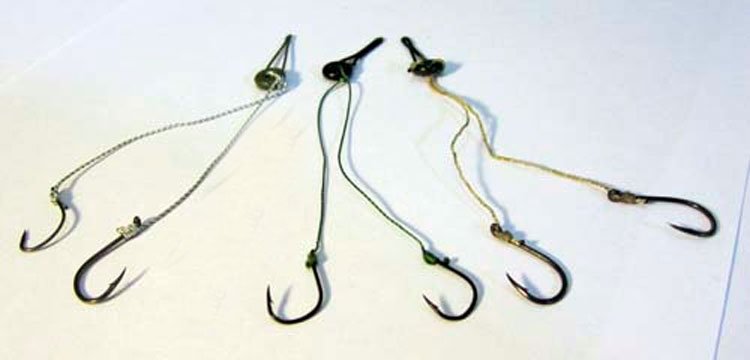
Fluorocarbon line
This material began to be used in the seventies of the XX century. The chemical and physical characteristics of this material are similar to those of Teflon. It is used both
for leashes and as a main line. One of the important features of this material is that it is not exposed to moisture even after a long stay in water. Because of this, it does not change its strength characteristics even with prolonged use. These leashes are invisible in the water, but very durable. They are suitable for catching most types of fish, including some predatory species.
Steel wire, aka “steel”
At first glance, it seems that it will be ineffective because it is relatively well visible in water. However, when fishing for pike, which can easily gnaw through an ordinary leash with your teeth, such leashes are irreplaceable. Steel leads are heavy and durable. They can be twisted, but it is not recommended to bend them several times in one place. In particular, this circumstance should be taken into account when organizing their storage. In the overwhelming majority of cases, this tackle is used for pike fishing. It is rarely used for catching other types of fish.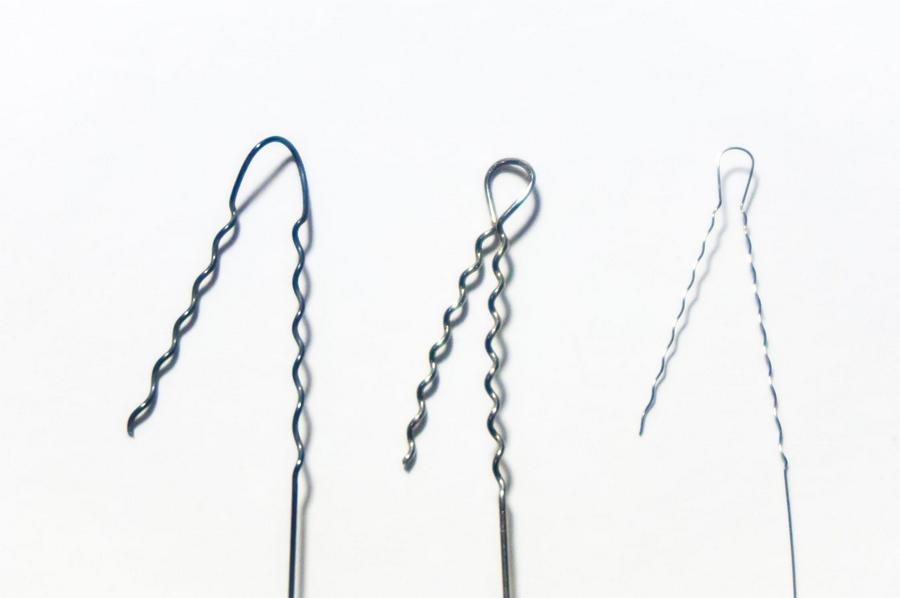
Kevlar leashes
The use of this material for the creation of leashes began relatively recently. Kevlar combines softness, ductility and high strength. Such leashes have gained popularity when fishing for trophy fish in wiring or carp using a nipple. When using Kevlar rigs, it should be checked for tooth marks and replaced if necessary.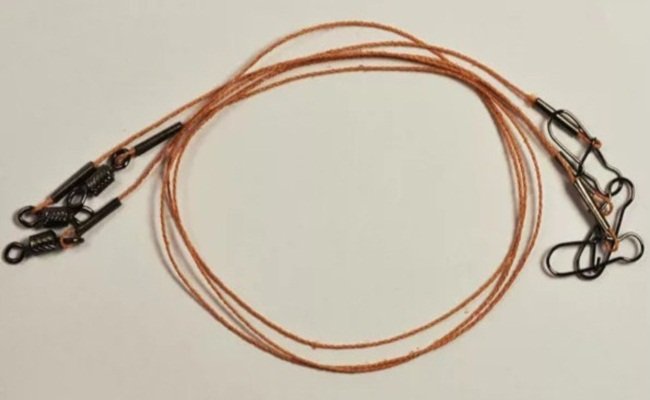
A tungsten leader is a good option for pike
Tungsten leader materials exhibit high strength. The material is lightweight and does not affect the play of artificial baits. The cost of tungsten leads is relatively low. The disadvantage of this material is the ability to remember the shape. It is considered impossible to straighten such material.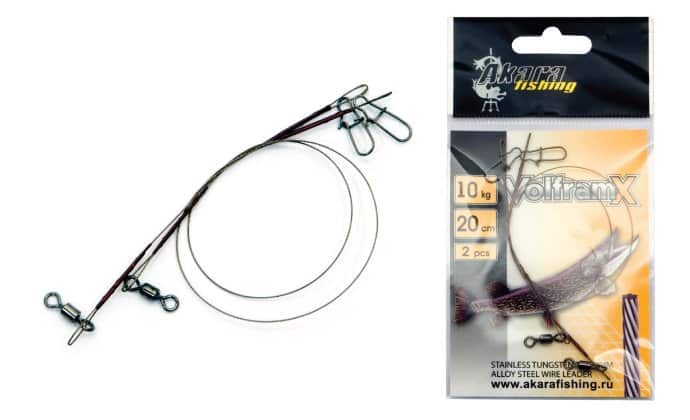
Titanium leashes
The titanium leash is durable and heavy. The material does not remember its shape. This option did not gain widespread popularity due to its high cost. Some fishermen prefer to use titanium leads when fishing for large fish.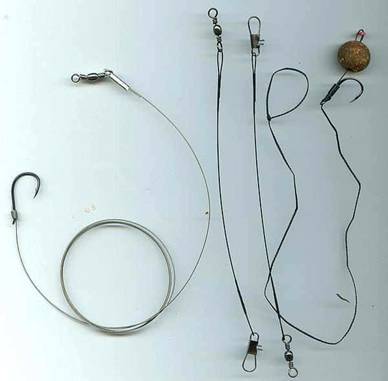
What types of fishing leashes are there
According to the principle of action, the leashes are divided into several types:
- Floaters do not sink or emerge. This is due to the fact that they have the same density as water. Used where there is a lot of underwater vegetation.
- When drowning, when cast, they immediately sink to the bottom . They are usually relatively thick and heavy. They are used in places where there is a clean bottom.
- Pop-up leashes tend to rise upward. Their area of application is a muddy bottom or the presence of underwater vegetation.
- Invisible leads are invisible to fish. They are useful for catching shy species. They are used in clean water.
- Rigid leads are used for fishing with jerk baits and jig lures .
There are also combined options. At the same time, the set includes various types of leashes. What are the leashes, types and types of leashes – what you need to know about fluorocarbon, twisting, titanium leashes and hardmono: https://youtu.be/pA1jdsiZBwY
Leashes for peaceful fish
When choosing a leash for a peaceful fish, you need to take into account that the following requirements are imposed on them:
- It must be resistant to wear and tear.
- It is important that this accessory has sufficient mechanical strength to prevent the fish from falling off the hook.
- Sometimes it is necessary that the tackle has a certain degree of elongation.
It is important that the correct types of fishing knots can be used for the leash. In most cases, it is sufficient to use a line having a thickness of 0.1-0.16 mm. If the fisherman uses a leash of minimum thickness, then it is recommended to use a rubber insert – feedergam. It is located between the main line and the leader, making the tackle more elastic. Feedergam length is usually 5-12 cm. [Caption id = “attachment_7436” align = “aligncenter” width = “523”]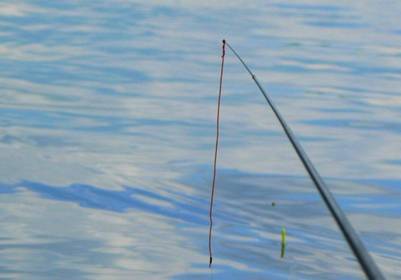
. When fishing, choose the most effective leash options.
Leashes for predatory fish
When catching predators, you need to take into account that they are much more aggressive. Their fishing is associated with high mechanical stress on the tackle. Therefore, various high-strength leash materials are used. Usually, predatory fish are larger than peaceful fish species. This places additional demands on the strength of the leader. It should be borne in mind that some species, for example, pike and pike perch, can mechanically damage the line from the line. This is associated with the use of such leashes, which are made of one or another metal, as well as fluor. Fluorocarbon is suitable for catching cautious predators, as such a leash is invisible in the water.
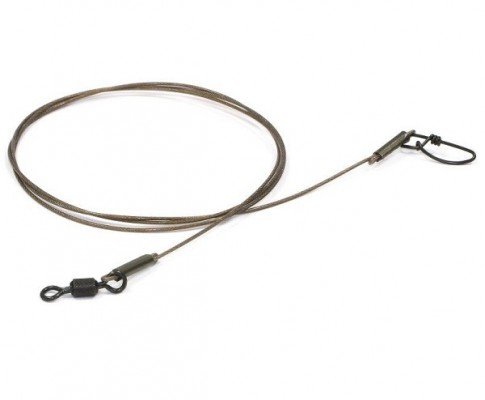
How to choose a leash for catching a predator, what kind of leash material to choose for pike, walleye, perch:
https://youtu.be/KfAU6-Sha2Y Braided leash material is often used in carp fishing: https://youtu.be/GE8sp7ETEDo
Leashes for various types of fishing
The use of leashes depends on the fish you want to fish. Experienced fishermen will prepare the required number of rigs so that they can use pre-prepared tackle when fishing. When choosing a fishing line, you need to pay attention to the following:
- Not the cheapest options should be preferred.
- When checking the magnitude of the tensile load, you need to consider what kind of fish you plan to catch. The value indicated by the manufacturer to obtain the actual value must be reduced by about 30%.
- You need to squeeze the line with your fingers. If after that she began to curl, then it is better to refuse her purchase.
It is believed that a good quality bobbin thread will shine. If a tackle is sold with a hook already attached, you need it to be well sharpened. Depending on the type of hook, you can determine the purpose of the tackle:
- if it is elongated, then it should be used with live bait;
- short is suitable for use with vegetable bait;
- The serrated hook is suitable for worms or other types of bait.
When using leashes in different types of fishing, the requirements may differ. For example, for a float rod or a donkey, they are simply tied to the main line with a loop in a loop and other knots.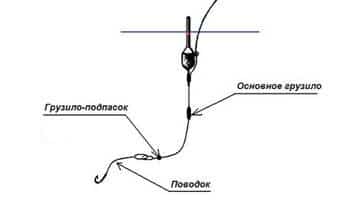
fishing on a feeder, it is necessary that the entire rig is mounted on the leash. Several different options are prepared for fishing. The length of the leash can be from several tens of centimeters to one and a half meters. However, when fishing with a slowly falling lure, their length can reach 2.5 meters.
How to do it yourself
Metal leashes can be made by hand. To do this, you need to take the following steps:
- Cut a piece of wire of the required size with pliers.
- Using round-nose pliers, make a loop to connect with the main fishing line.
- On the other side, make another loop for attaching the swivel.
- The folded ends on both sides should be wrapped around the body of the wire.
To make a leash from fluorocarbon and synthetic materials, you need to follow these steps:
- A piece of thread is cut off to the desired length.
- The crimp tube is put on.
- A loop is made into which the swivel must be inserted.
- The tube is crimped.
- The second edge of the line is processed in the same way.
